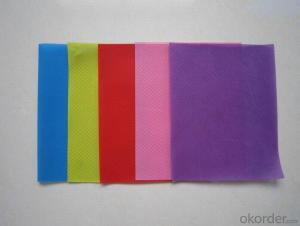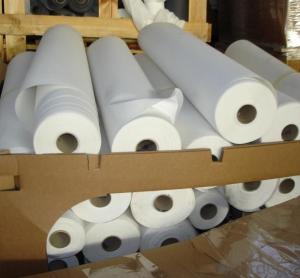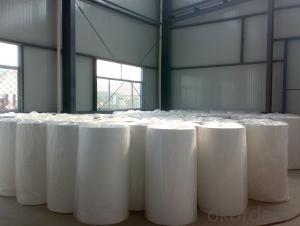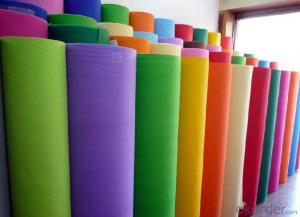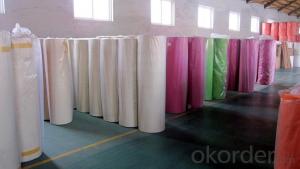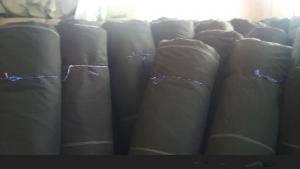pp non woven fabric for medical , agriculture,bags,sofa uphoistery
- Loading Port:
- Shanghai
- Payment Terms:
- TT OR LC
- Min Order Qty:
- 1000 kg
- Supply Capability:
- 10000 kg/month
OKorder Service Pledge
OKorder Financial Service
You Might Also Like



We are recognized as a reliable Manufacturer, Exporter and Supplier of Non Woven Fabric. We can provide Non Woven Fabric in any gram/m2 and any colour required by customer. Non Woven Fabrics are broadly defined as sheet or web structures bonded together by entangling fiber or filaments (and by perforating films) mechanically, thermally or chemically. PP Spun bonded Non woven Fabrics are produced using a precise extrusion-based technology. The polymer is stretched into a continuous filament and loosely spread onto a conveyor belt to form the web. Air is used to form and lay the fabric filaments. On the other hand, some non woven fabrics can be recycled after use, given the proper treatment and facilities.
Product Specifications
Weight: 10 - 150 gsm
Width: Max 1600 mm (can be slit)
Fabric Roll Length: As per buyer’s need ( 200 - 1200 Mtr)
Color: various colors available.
Procedure of production: Spun bonded Non Woven, Diamond design
Material: polypropylene
Minimum Order: 1000 Kg
Sample: sample free, freight collect
Product Application
Non woven fabric manufacturers usually manufacture the fabric in a roll form. It is then sent to various other industries where it has end applications, where is it cut and given different form depending upon the use. They can also be used in combination with different materials and offer a wide range of products.
Colored Non woven fabrics are use in many sectors and variety of applications, such as Health, Hygiene, Medical, Packaging, Agriculture, Furniture Upholstery, Geo Textiles, Leather Industry, Shoes and Garments. Customers come from the textile and automotive industries as well as many other sectors.
- Q: What are the test tests for the color fastness of textiles?
- 13, resistant to non-chlorine color fastness 14, resistance to chlorine color fastness 15, acid color fastness 16, alkali color fastness 17, water-resistant color fastness 18, resistance to organic solvent friction color fastness
- Q: Differences between textile mills and garment factories
- In order to have fabric sent to the garment factory made of clothes. Garment factory is made of various kinds of fabric clothing;
- Q: What is the textile technology profession now?
- Dyeing and finishing technology; this course more systematically describe the various textile fiber products in the dyeing and finishing of the basic process and process conditions, and the principles and commonly used machinery and equipment for a brief introduction, so that beginners master the basic knowledge of dyeing and finishing The
- Q: China textile products do not how points? What kind of?
- Industrial chain long, professional market developed. Jiangsu, Zhejiang and Shanghai region has formed from the textile raw materials, fabric weaving to dyeing and finishing, clothing production longer textile industry chain, the upper and middle and downstream products rich and varied. The textile industry has a high degree of marketization and professional market network.
- Q: What are the invoices for the textile industry?
- If you are the general taxpayer of the production type, the raw material of the purchased textile is the incoming invoice
- Q: What is a large circular machine and a small circular machine in the textile?
- Second, the large circular machine also has low-grade products, small round machine also has quality products. Brand knitting circular machine is in the high-end products, the size of the specifications are, and the name of the assembly of the knitting machine is also the size of the size of the specifications, but its performance, function and accuracy is far better than the brand machine.
- Q: How does the chemical composition of the textile be analyzed?
- Cotton, hemp, wool (sheep, rabbit), silk, polyester, viscose, spandex, nylon, cashmere and so on
- Q: Mechanical characteristics of textile machinery
- A major development feature of modern textile machinery is to continuously improve the speed of the machine, resulting in high yield, to reduce the number of equipment, reduce plant area, save investment and labor, with less money to achieve greater results. Table 1, Table 2, Table 3, the figures show the trend of high-speed textile machinery.
- Q: What are the knowledge and abilities of the Merchants in the textile industry?
- This "list" may be a purchase order, there may be sales orders, there may be other list.
- Q: Buy two large round machine to do processing, in Changshu side of the textile processing to do it?
- In addition, Changshu City, the main clothing market. There are many wholesale trade clothing, for example, there are many in the vicinity of Changshu bus station.
Send your message to us
pp non woven fabric for medical , agriculture,bags,sofa uphoistery
- Loading Port:
- Shanghai
- Payment Terms:
- TT OR LC
- Min Order Qty:
- 1000 kg
- Supply Capability:
- 10000 kg/month
OKorder Service Pledge
OKorder Financial Service
Similar products
Hot products
Hot Searches






